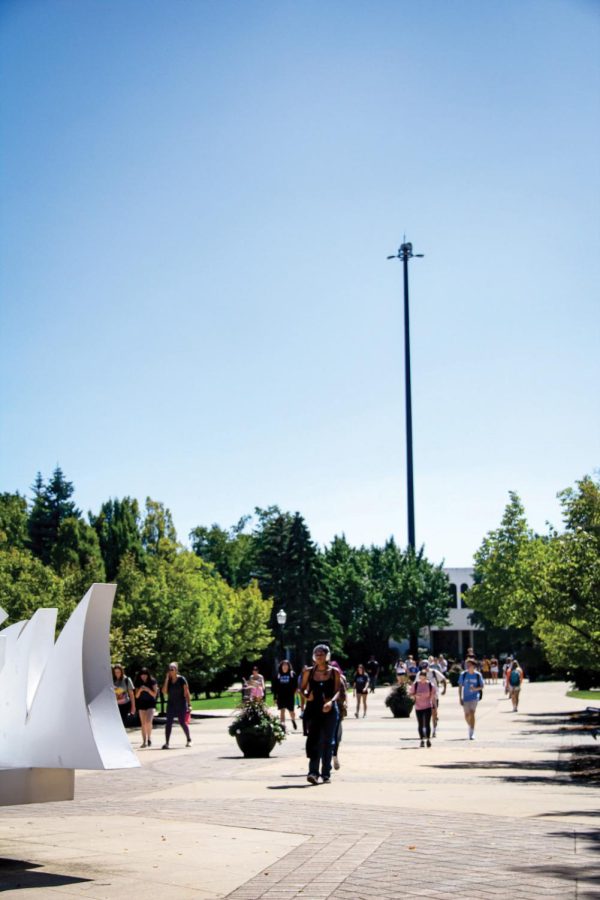GV seeks to dispel rising polarization through new civil discourse series
Sep 6, 2022
Grand Valley State University’s Padnos/Sarosik Center for Civil Discourse is attempting to tackle the issue of proliferated polarization through a newly introduced series centered on community dialogue.
The program, titled “Talking Together,” is designed to be a remedy for the affliction of polarization through discussion between people and forming common ground despite partisanship.
“It’s inspired by how many students and community members I talk with who are seeking ways to connect to one another,” said Padnos Center Director Lisa Perhamus. “87% of people in the United States say that political polarization is a threat to America. 70% of people in the United States say instability is at crisis levels. 88% of students think that universities should encourage students and professors to interact respectfully around differences and perspectives and opinions.”
The program seeks to do just that by fostering a forum between Grand Valley State University community members. It has partnered with the Kaufman Interfaith Institute, Hauenstein Center for Presidential Studies and WGVU Public Media to best achieve this goal.
The program will consist of an event each month produced by the coalition of university entities designed to encourage civil discourse, decrease animosity and bridge divides.
“We have the invitation to respond to what students are asking for,” Perhamus said. “It’s the opportunity to both learn how to have these conversations across differences but have them actually happen. We have events planned all through the year, we really need people from all different perspectives participating.”
When it comes to getting people talking together, Perhamus believes it is harder when there’s a preconceived notion.
“It’s really hard to get people who are really polarized to come into the same place and engage,” Perhamus said. “There’s a lot of uncertainty and fear. People worry about conflict, and there’s a whole list of reasons why it happens. But if we have a good representation from a robust mix of perspectives, by the end of the year people will walk away with a greater sense of confidence and comfort level with these types of difficult conversations.”
Talking Together isn’t just limited to the political sphere, Perhamus said, but also in the most commonplace areas for students.
“These difficult conversations happen around our dinner tables, for example,” Perhamus said. “It’s not just in college campus classrooms or just with our political leaders; it happens in our personal lives as well. So, it will make folks more comfortable with the messiness of these difficult conversations and to learn some concrete strategies of how to have these conversations.”
While efforts like the initiative likely won’t solve these issues instantaneously, Perhamus said, the effects of such efforts are vital to facilitating a greater sense of understanding and respect amongst the campus community.
“I don’t think Talking Together will lead to some kumbaya community harmony experience,” Perhamus said. “I want people to learn that we are not stereotypes or caricatures of each other, to learn to see the humanity of one another and move beyond those stereotypes.”
Some students feel like this is a necessary step towards action in reducing the amount of polarization felt around campus.
“I feel like, overall, people just need to listen to each other,” GVSU junior Seth Decaire said. “Our whole society is built and motivated by different stories. I feel that we need to listen through everyone’s experiences – to stay quiet and listen to what everyone has to say before we interject and throw our opinions out there.”
To learn more information on the Talking Together initiative, you can find more on their website or by participating and listening in these difficult conversations with their series of campus events starting Sept. 21.
























